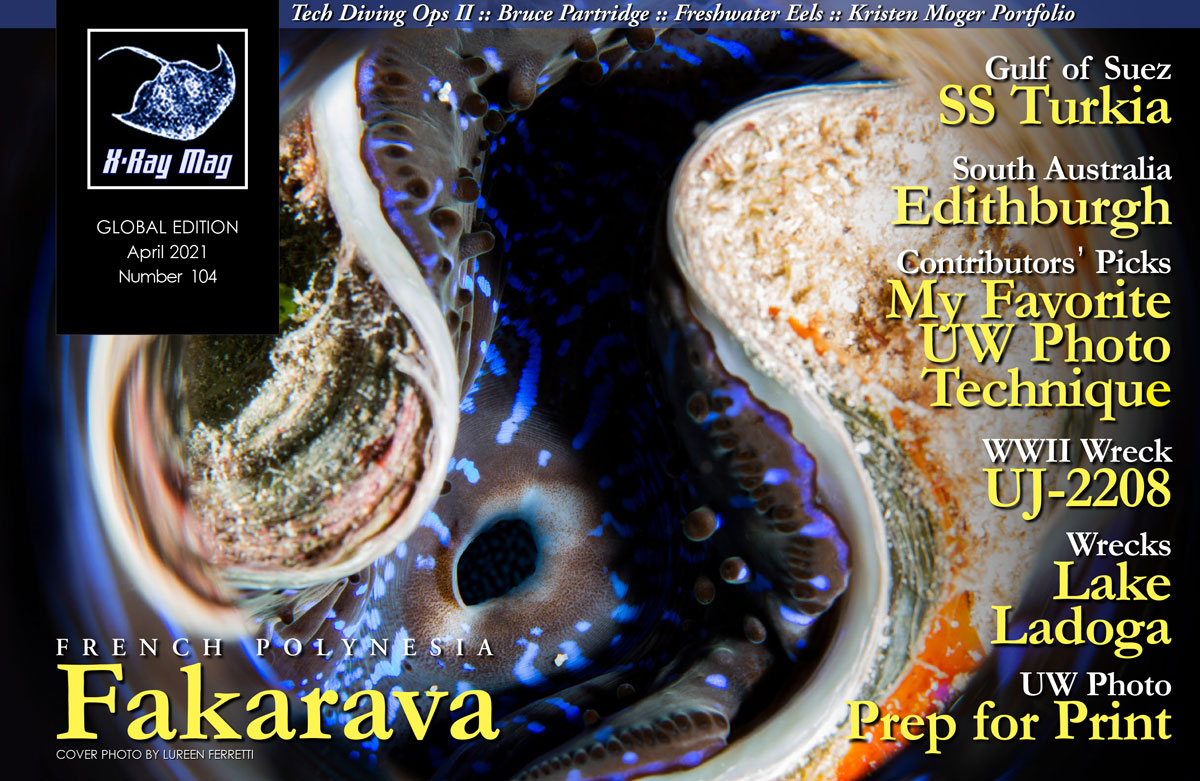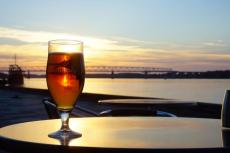Ladoga is a magical lake—a location and natural monument that fascinates many tourists. In Europe, it is the second largest lake after the Caspian Sea. Sergey Kulikov takes us on a journey to this body of fresh water, located in northeastern Russia, just outside of Saint Petersburg, and reports on an expedition to some of the wrecks that can be found here.
Contributed by
There are many attractive places in the waters and on the shores of Lake Ladoga. These include national parks, Orthodox shrines and other numerous historical monuments.
The lake is also rich with islands. Most of them are situated in the north. Like a beautiful necklace of nature, the famous Ladoga skerries are separated by a whimsical labyrinth of straits. An integral part of these skerries is the famous Valaam Archipelago, where the ancient monastery, also called Valaam, is located. It can rightfully be regarded as the spiritual heart of the Russian nation. Historians believe that the first settlers appeared on the lake immediately after the Baptism of Rus.
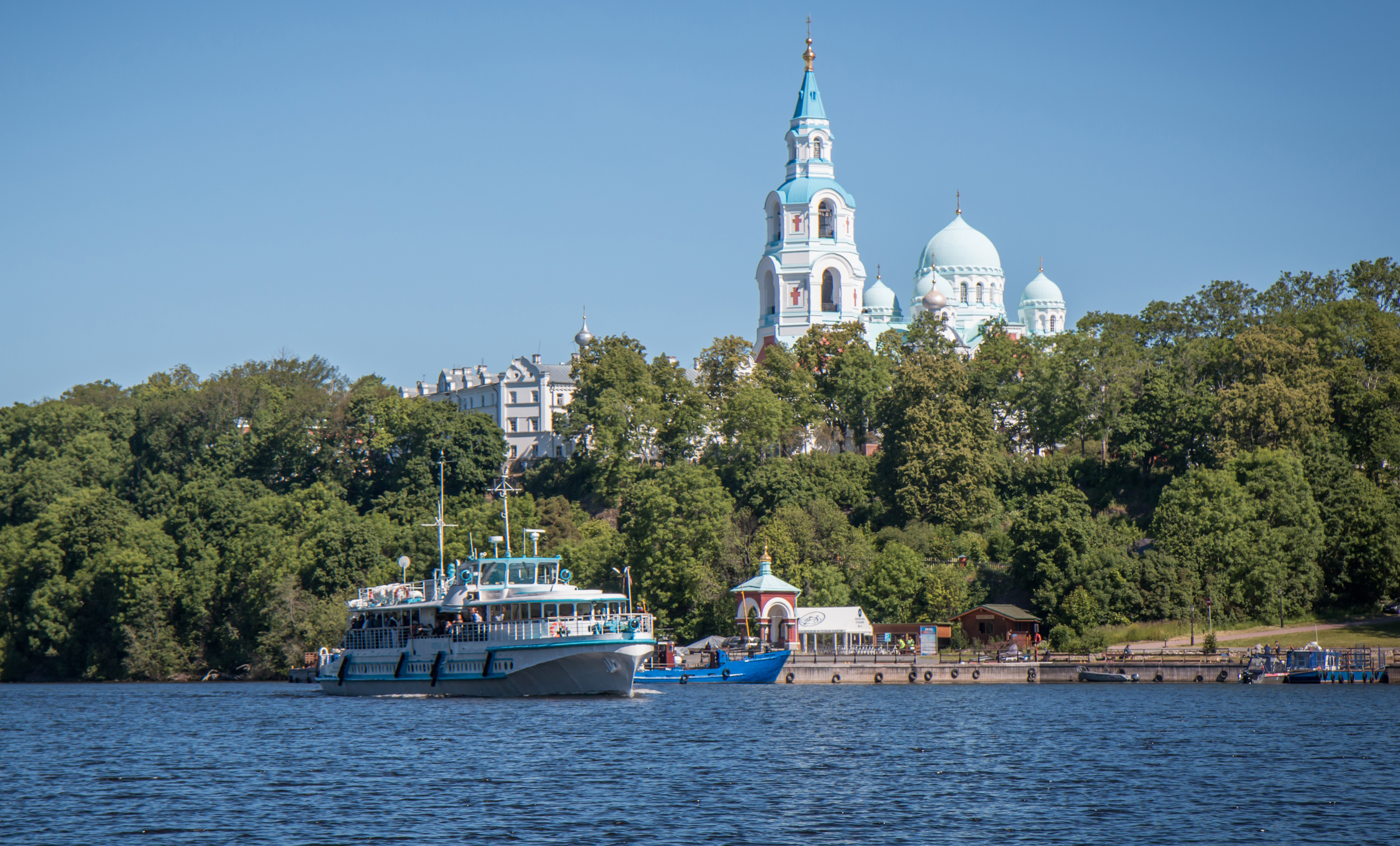
Over time, the community has grown, and monasteries and temples were built. Nowadays, the islands attract not only pilgrims but also tourists who wish to see the monuments of Russian architecture surrounded by the pristine nature of Ladoga.
One of the unique inhabitants of the lake is the Ladoga seal. This is the only species of marine mammals that has adapted to life in fresh water. The seals’ rookeries are under special protection on the islands of Valaam.
The amazing city of Sortavala is located on the northern coast of Lake Ladoga. It owes its peculiar historical and cultural features to three countries—Finland, Sweden and Russia—to which it was attached at different times. This is where one finds Karelia, a most beautiful city, which surprises visitors with its unusual architecture.
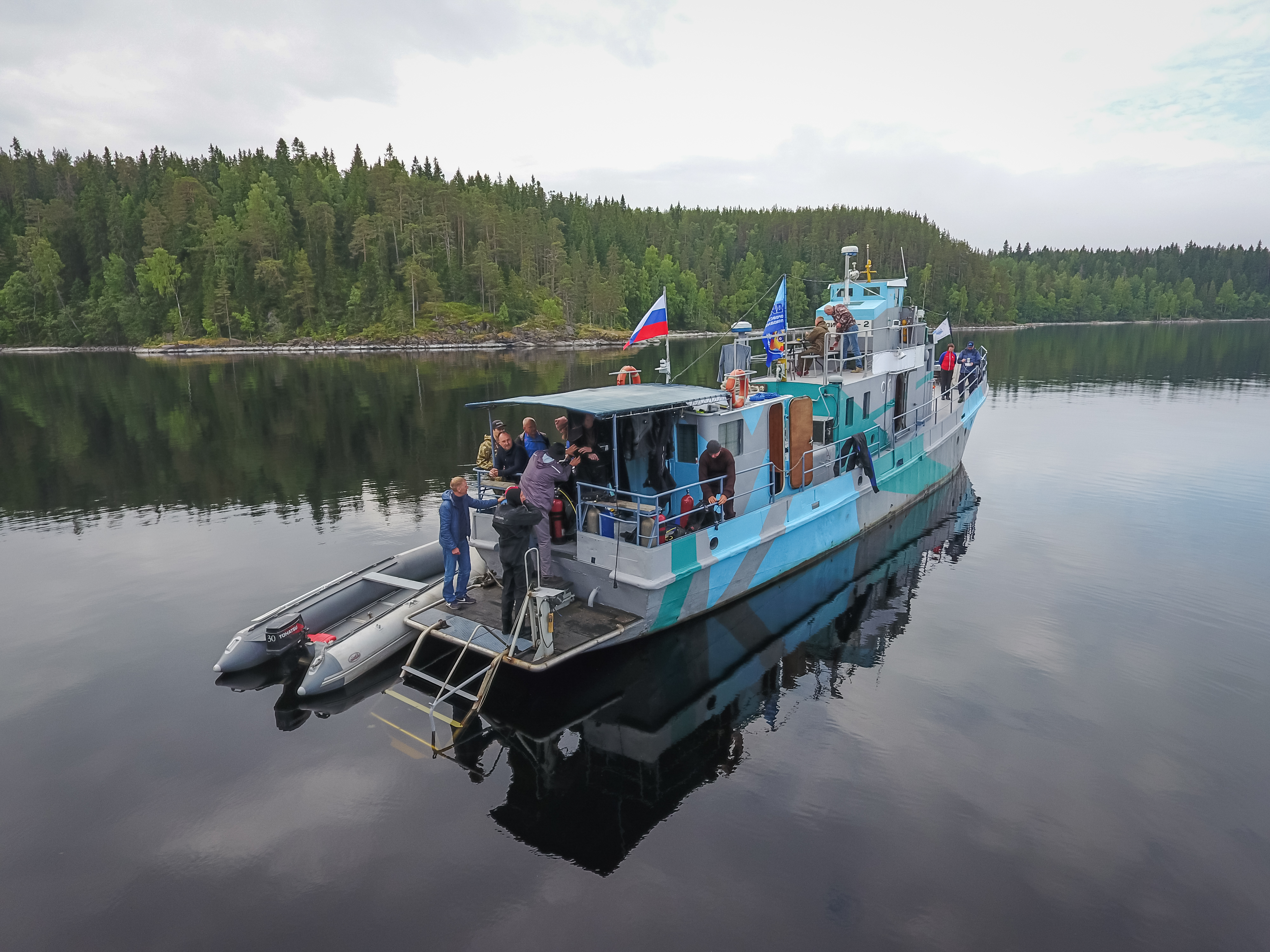
Challenging conditions
The depth of Lake Ladoga can reach 300m in certain places. But what matters most about the lake is its character, not its scale. Often, in calm sunny weather, squalls of wind and strong storms with six-meter waves might abruptly appear.
The captain of the Odyssey-2 dive boat, Mikhail Chupin, who is a seasoned seaman, said, “The biggest wave I got into there was during a five-meter storm.” He continued, while puffing on his pipe, “It happened in 1993… Due to inexperience, I got into trouble. From Valaam, we went to the Svir River and on to Onega in Petrozavodsk. And suddenly a storm began, with waves of five meters. Because this was a freshwater lake, the storm accelerated instantly.
“The waves here are not the same as they are in a sea with high salinity, where the wavelength is about 120 to 140m, with a wave height of, I suppose, three meters. On Ladoga, the wavelength is just 20m. In the Gulf of Finland, which is fed by fresh water, there are also very dangerous waves. A wave of five meters on Ladoga is like a five-meter fence, which you have to somehow either pierce, or jump over; and if you keep jumping over this fence for an hour, or two, or three... it gets you very tired.
“It is impossible to describe how it was… I can only say that on the tenth anniversary of this event, those who were on board then on this diving boat came together specially to celebrate this occasion. It is important to mention that these guys, who had traveled the whole world and seen a lot, had never experienced anything like this in their lives… You just have to treat Ladoga with respect and understand where you are, and then everything will be fine.”
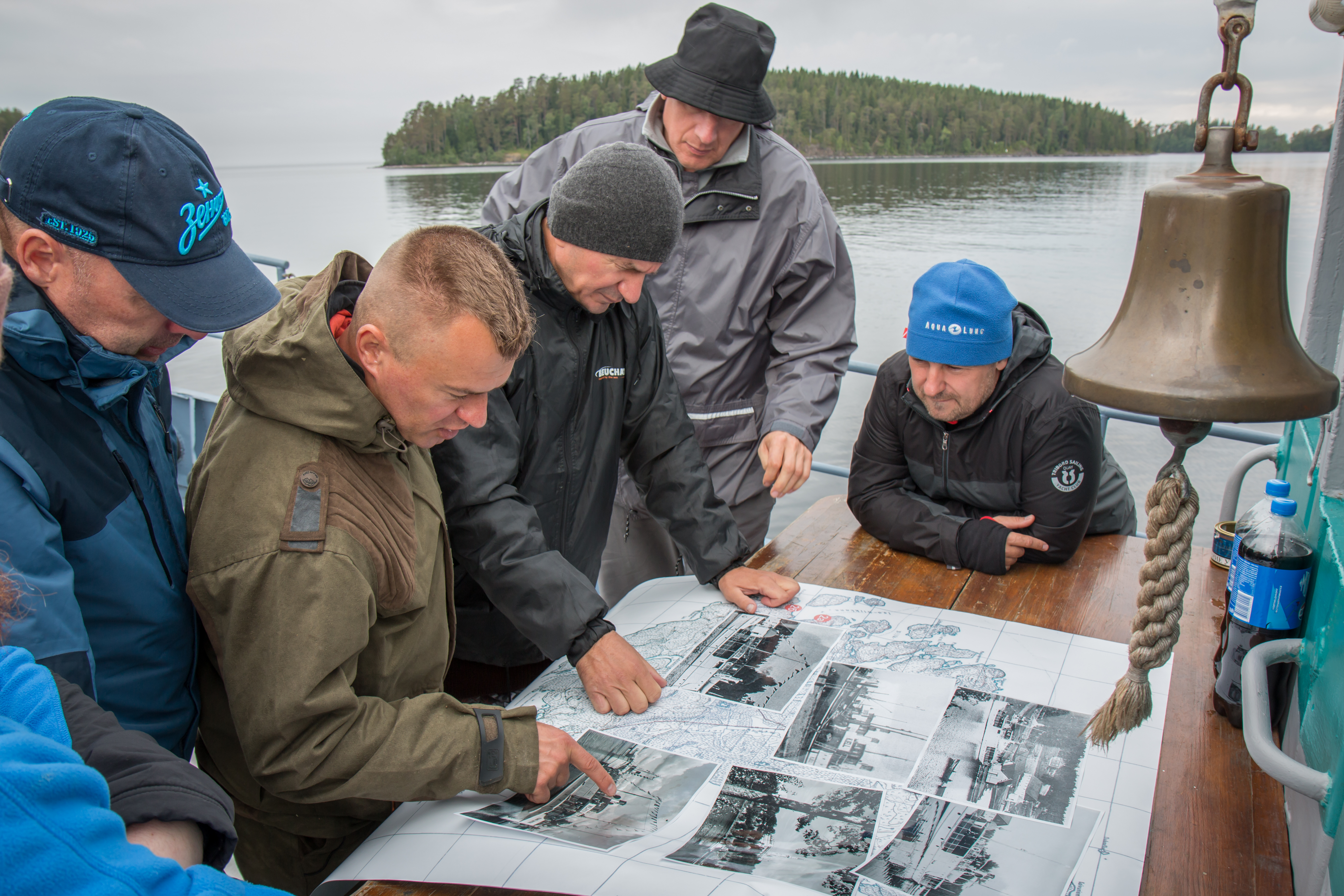
Inspiration
Indeed, Captain Chupin is a legendary man, an excellent storyteller and a lover of mysterious stories. It was in fact his tales about the sunken ships of Ladoga that inspired us divers from the Oryol dive club, “Divo,” to spend our weekend here, on Ladoga.
In the last few years, there have been problems with traveling abroad, due to the exchange rate. At first, we were discouraged, but not for long. Peeking at a map of the immense country of Russia, we realized that our native land was full of places that were suitable for diving, such as the Barents Sea, Lake Baikal and Lake Ladoga. And we never regretted it. Nowhere is there more beauty than here. The white nights on Ladoga are definitely worth experiencing! On our first days here, we ran around like children—the islands, the beauty, the captain’s stories—everything was so interesting.

Finding a wreck
On one of our trips to Ladoga, our team decided to stock up on food on the island of Valaam. Three divers—Nikolay Logvinov, Eduard Chinyonov and Vitaly Dyumin—and a ship mechanic Sergei Loginov with his faithful companion, a dachshund, got into the zodiac. The group went to the nearest hardware store on the pier. Only there could one buy the famous smoked trout, which is raised and cooked according to a special recipe by the monks of the Valaam Monastery.
“We had already returned to the ship,” remembered Logvinov, “in the Big Nikon Bay of the Valaam Archipelago. Once again, we decided to work with a side-scan sonar. We turned it on and saw the outline of an object on the device. It was Loginov, the mechanic and mate of the Odyssey-2, who was the first to see the steamer and said: ‘Guys! This is something clearly man-made and it does not exist on any navigation chart.’ We froze with delight. Had we found it? But what exactly?”
What we had managed to find was the ship Valamon Luostari, which sank during the Winter War between the USSR and Finland in 1939 to 1940. This was the only combat loss for both sides during this period. It was well preserved and very promising in terms of a more detailed examination. At sea, it simply would have decomposed into atoms or turned into a beautiful reef.
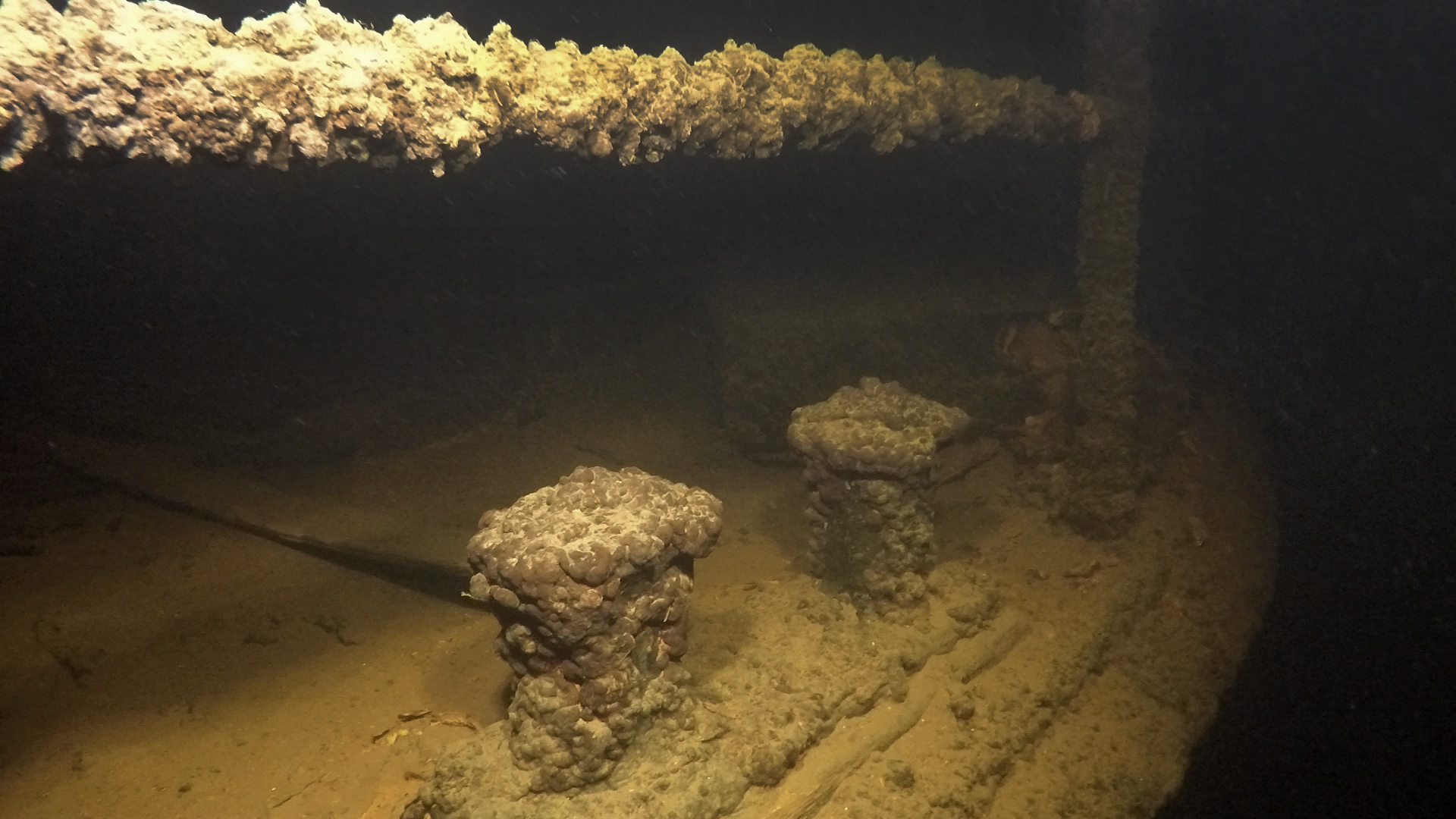
Captain Chupin said: “The water is cold here; the visibility is not very good. As for living creatures—there are perhaps less than what is found on the moon! But there are also advantages—the preservation of everything that sank or drowned... it is like a museum. The water temperature at the dive points does not exceed 5 to 9°C.”
I said: “Each diver dreams of finding a sunken ship. It’s an indescribable feeling, an inner delight, which not everyone gets to experience. Thank goodness that there is such an opportunity to touch history!”
Experienced divers say that it is a great success to be able to salvage from the lake bottom of Ladoga some beautiful tableware, or simple luck to salvage a dive torch or a weight belt. During this expedition, tableware fragments from the galley, a gimbal joint (presumably from a gyrocompass), and two navigation lights were found. One of them had a nameplate on it with a mark and an indication of the manufacturer. But the main objective was a complete inspection of the steamer.
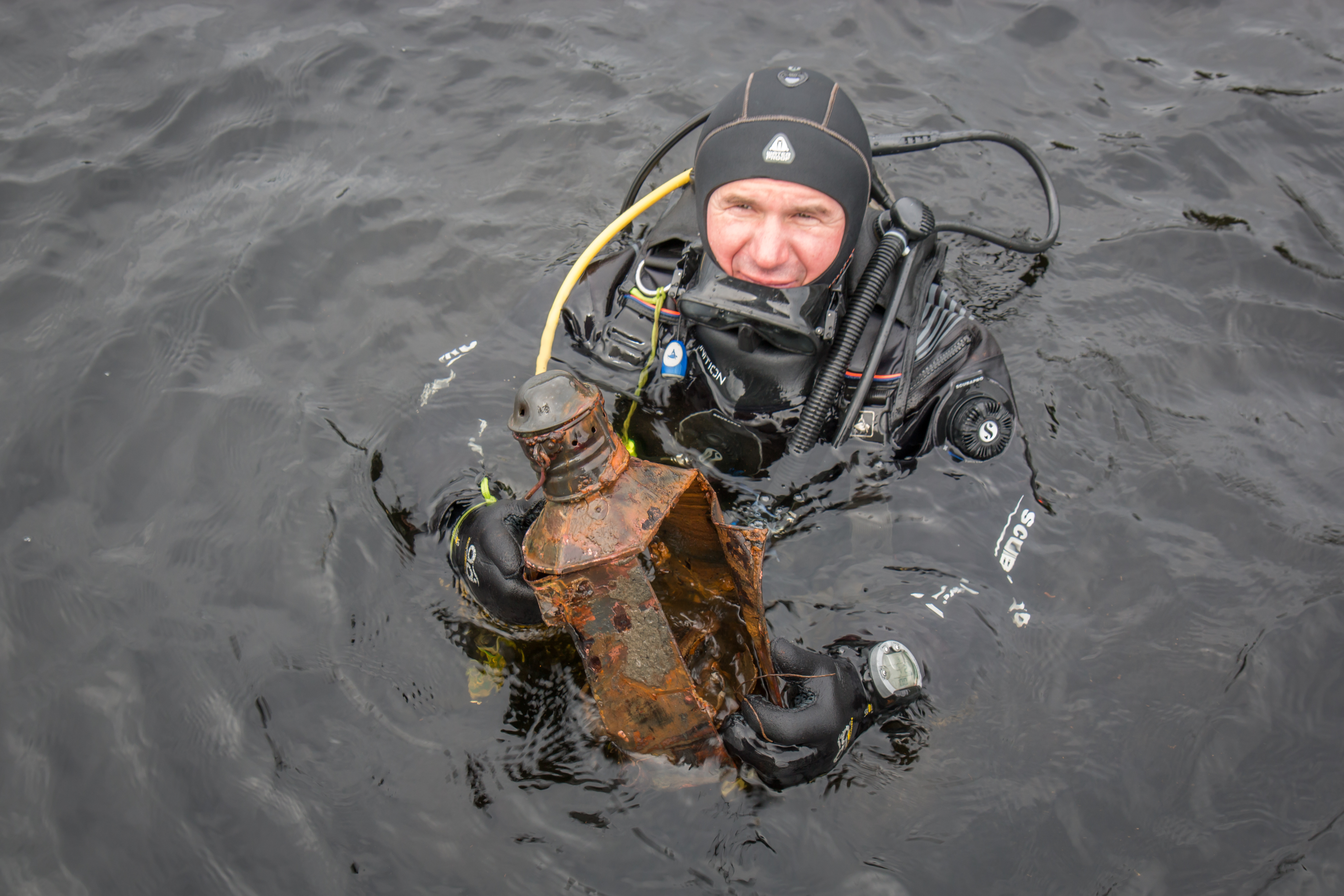
Often, the discoveries made by research expeditions, which are funded by state budgets and extrabudgetary funds, are less significant than the discoveries made by wreck enthusiasts—fanatics of their own adventures. Moreover, the equipment, preparation and organization of expeditions by enthusiasts are a burden on the budgets of their families. But it is often the most passionate people who find the most fascinating things. First of all, a key to the success of any expedition is its people—like-minded folks who effectively complement each other and clearly distribute responsibilities.
A flock of cheerful, good-natured tourists often traveled with these divers, supporting them in their search, empathizing with them, organizing leisure activities, picking mushrooms and maintaining a friendly atmosphere. And, of course, they supplied the Coke with the freshly caught fish. In a word, those Russians whose vacations were canceled this year in the Maldives and the Canaries due to the pandemic, did not regret it for a second.
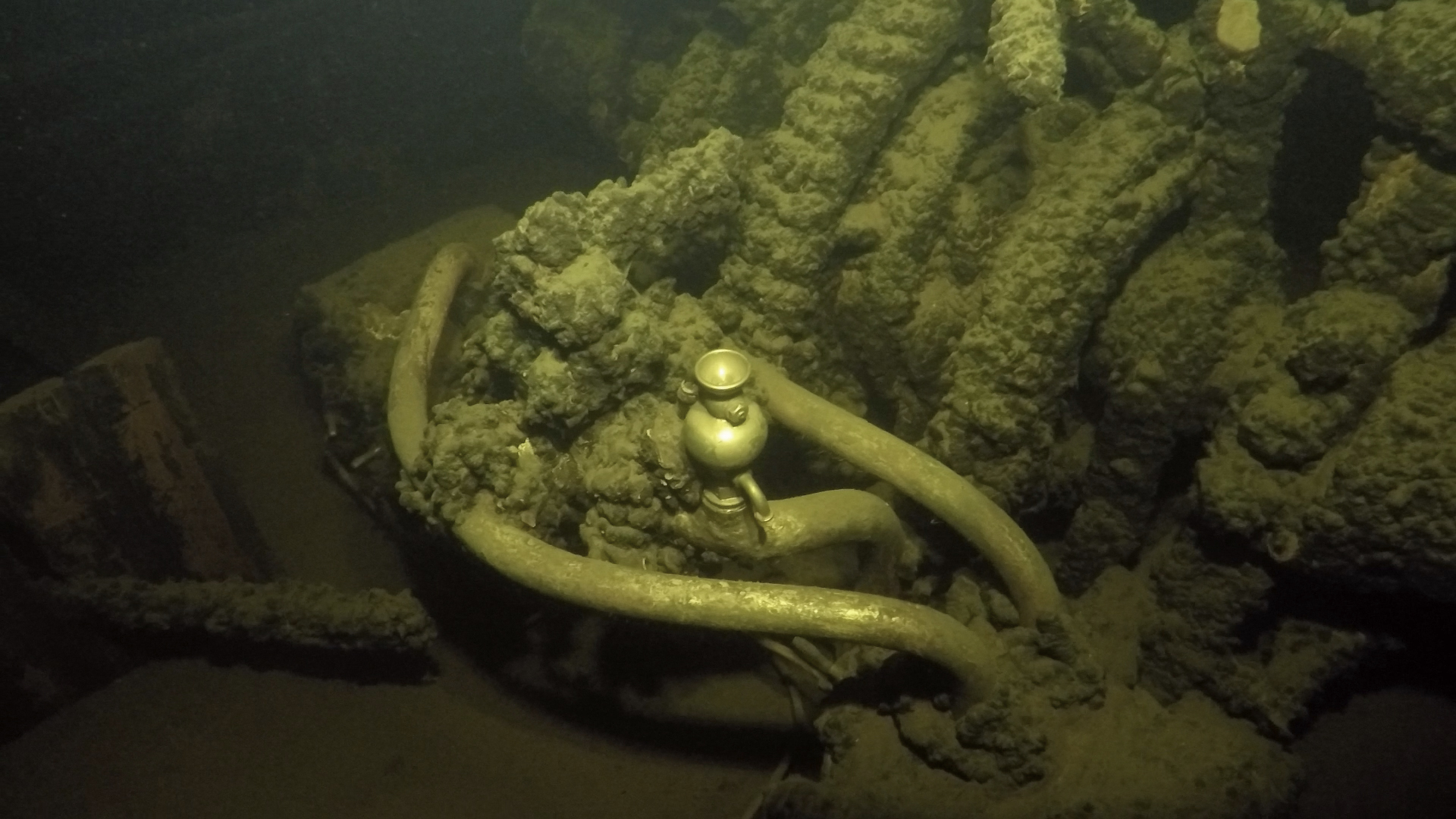
Revisiting the wreck
After some time had passed, our team once again visited the previously found steamer Valamon Luostari. It had now become a tourist attraction, where divers dived the wreck regularly. Much had changed on it; the muddy sediments in the holds had been washed out by hydro-ejector. One of the anchors of the steamer, which was lying on the ground, had been salvaged and handed over to the Valaam Monastery.
We dived the site with bated breath. What if we managed to find something? A lot had changed on the ship during the year. Some of the elements that were there before were already missing. A colleague Stanislav Trofimov echoed my thoughts: “Of course, it’s great that other divers get to see and dive the wreck, but I would like people to treat such objects with more consideration. Because the way it is now, you can take everything away as souvenirs.”
However, this day brought us not only disappointment, but also joy. The water in Lake Ladoga was dark, the bottom was muddy, but what good luck we had!
“The visibility is bad, like everything is in a fog,” lamented fellow diver Alexander Arkhipov. “I got into one of the holds and found some bottles on the silted floor. I have only two hands, so of course, I grabbed these two bottles.”
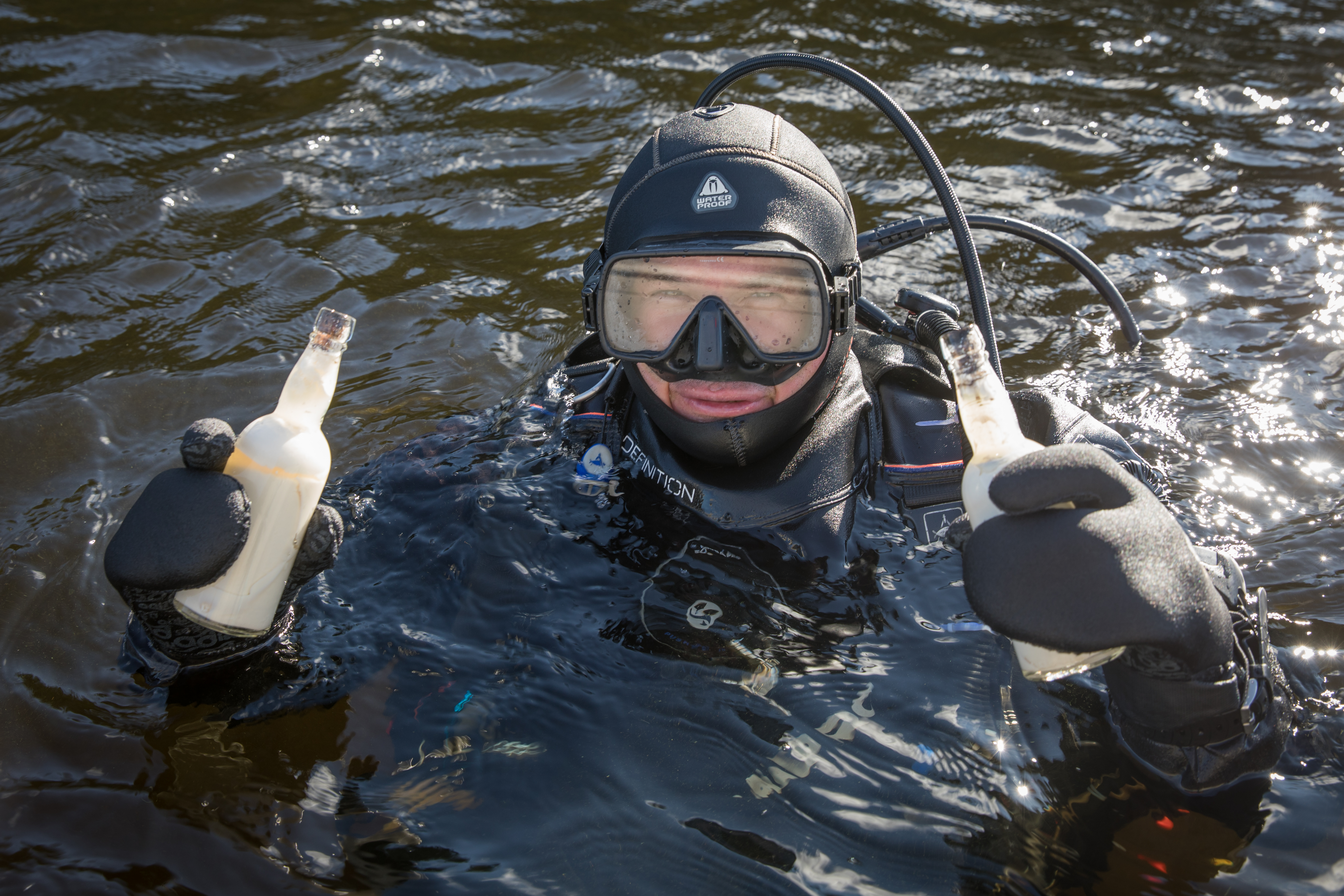
It turned out that we also could not resist seizing something from the sunken steamer, although it was not acceptable to do so. But the find was worth it!
There is a lot of information in regard to the fact that bottles with alcohol have been found on sunken ships, but on this steamer, we divers found bottles of milk. For 80 years, they had lain in the holds of the Valamon Luostari. The bottles were about 300 grams, tightly sealed with wooden corks. Inside was a white liquid, like milk. Presumably, it was a dairy product from the local monastery’s farm. Nobody tried the 80-year-old milk, though. The steamer belonged to the Valaam Monastery once, so we decided to return its contents to their owners.
Geological & historical insights
Our dive team was invited to a meeting with the pilgrims of the Valaam Monastery. The tour guide of the pilgrimage service, Yana Gaidukova, spoke about the history of the Valaam Archipelago, about how these islands appeared: “When magma began to rise, it saturated the earth’s crust and pushed it up. This process is called intrusion, and if the magma rose to the top, it would become a volcano. But it never came to the surface of the earth’s crust. Beautiful stones then appeared, which we call gabbro diabase, and the Valaam Archipelago is composed of them.”
The Valaam Archipelago occupies an area of 36 sq km, with around 50 islands. There are also so-called gull islands on Ladoga. They usually do not have a name, but the gulls love them and raise their chicks here.

The largest islands of the Valaam Archipelago include the island of Valaam, which is 28 sq km long, and the island of Skitsky. Monastic prayer has long been practiced on these islands. Gaidukova said: “It is thought that the Saints Sergius and Herman became the founders of the Valaam Monastery, and the monks, as the legend says, came from the Eastern countries, i.e., they were probably Greek missionaries. It is possible that Christianity appeared on Valaam even before the Baptism of Rus. Through the labors and prayers of the Saints Sergius and Herman—wonder workers of Valaam—the beginnings of the Valaam Monastery was laid.
And here is a stunning fact: The brethren had never taken up arms in the entire thousand-year history of the Valaam Monastery. They literally followed the oath of Lord: “Thou shalt not kill.” And when they learned about the invasion by the Swedes, they fled from the island, saving the relics of Saints Sergius and Herman, or hid in the woods, or accepted a martyr’s death. The land upon which we now stood was a land watered with the blood of Christian martyrs.
The holy righteous Saint John of Kronstadt wrote that on Valaam, on every stone, one can serve the liturgy. Through the prayers of the Valaam martyrs, as well as the prayers of other Valaam saints, the Valaam Monastery had been revived again and again, despite often being subjected to devastation, destruction and desecration. And now, the Valaam Monastery is one of the most beautiful monasteries in Russia, one of the most populated monasteries, and let’s hope that this will continue, he wrote.
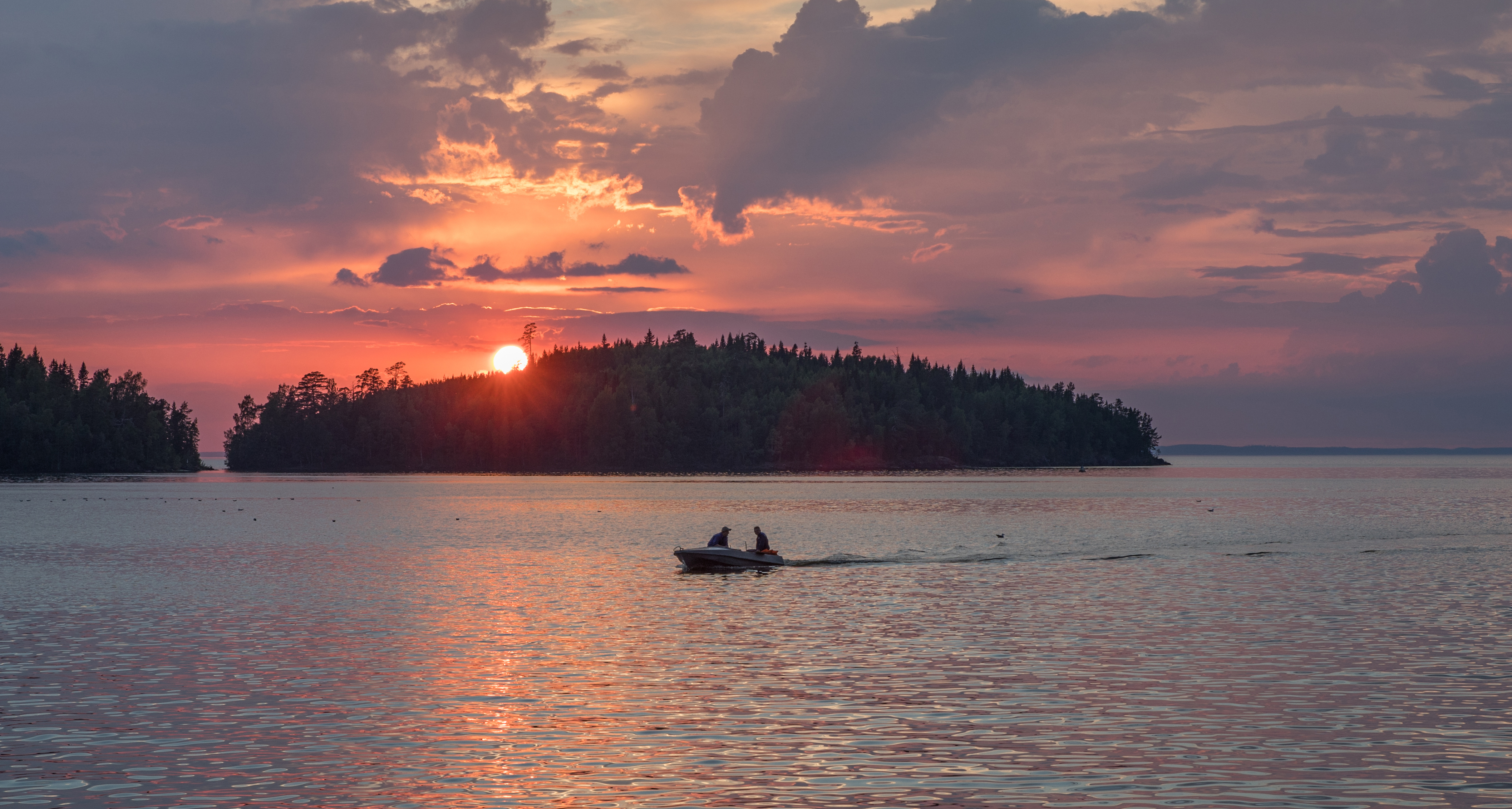
After the presentation, we sang songs, drank delicious Ladoga tea, warmed ourselves near the fire and watched the sunset. “Honestly, I have never seen such beautiful sunsets anywhere else. Wherever I have been, the best country for experiencing and watching sunsets has got to be Russia!” the youngest member of the expedition Vladimir Stroyev hurried to tell us, with delight in his eyes. This was the moment when we divers discovered “... we don’t really need the Turkish coast and we don’t really need Africa.” In fact, all we need to do is to travel more often in our own country.
In parting, a so-called Scandinavian candle was “hoisted.” A one-and-a-half-meter log was installed vertically, cuts had been made in it from above, and the upper part of the log was set on fire. It burned for a long time, and it could be seen from afar. In fact, the Karelians used such candles as mini lighthouses, which burned and burned, clearly.

Kilpola
One day, we sailed to the island of Kilpola—the western end of the Ladoga skerries. With the help of side-scan sonar, we examined the bottom of Severnaya Bay, where, according to our information, a barge could be located, which had been sunk during the Winter War (Soviet-Finnish war). But, unfortunately, it was never found. Moreover, as a rule, the cold and clear water of the lake this summer turned out to be muddy, with visibility of no more than half a meter. But the members of our expedition were not going to give up.
We decided to explore a barge discovered back in the ‘90s of the last century. It lies not far from the coast. Apparently, it sank as a result of the explosion of another barge, which was located nearby, loaded with ammunition. The area at the bottom adjacent to the detonation site is still replete with explosive artifacts. “At the anchorage near the island of Kilpola in August 1941, three Soviet divisions tried to evacuate through Ladoga under fire from the Finnish artillery. Divers found material traces of this event. Shells, cartridges and the barge itself, on which the evacuation was carried out, were found,” said Vladimir Stroyev, a member of the expedition.
Although the first dives did not bring sensational discoveries, everything that was found excited us and gave one food for thought: “One can only imagine what kind of battles were going on here,” said fellow expedition member Oleg Shabunya. “The bottom is just littered with shells, cartridges, boxes... It is very impressive.”
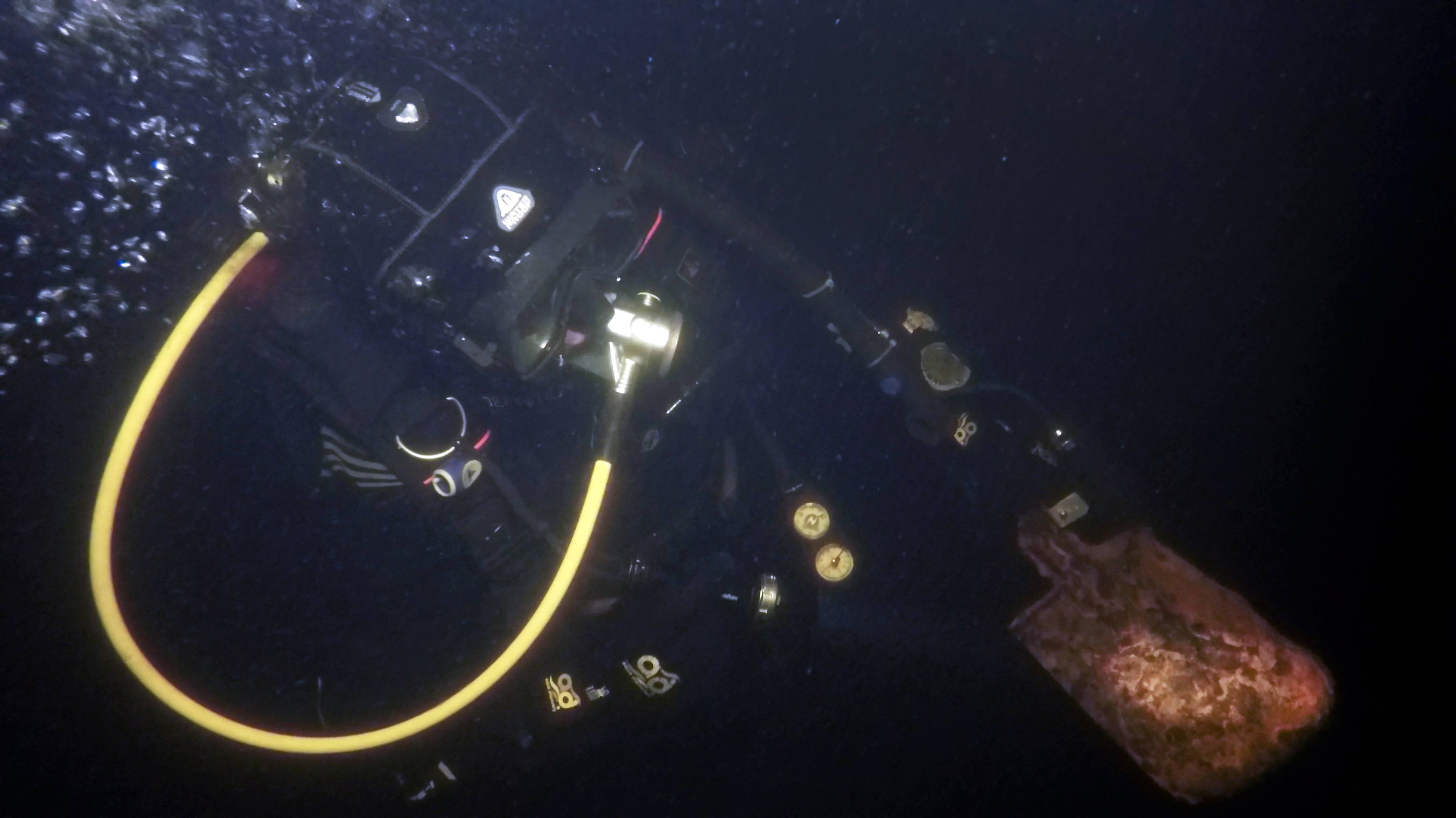
Heinäsenmaa
Then we went to Heinäsenmaa—”hay land”—a group of small islands in Lake Ladoga, part of the Western Archipelago. On these islands during the Second World War, there was a defensive line, and then a secret research base. In the waters of the Heinäsenmaa islands, divers found a supposedly ship-based cannon. “During the diving survey, it was found that it was a Soviet 70K anti-aircraft gun (sea version of 61K anti-aircraft guns),” said Shabunya.
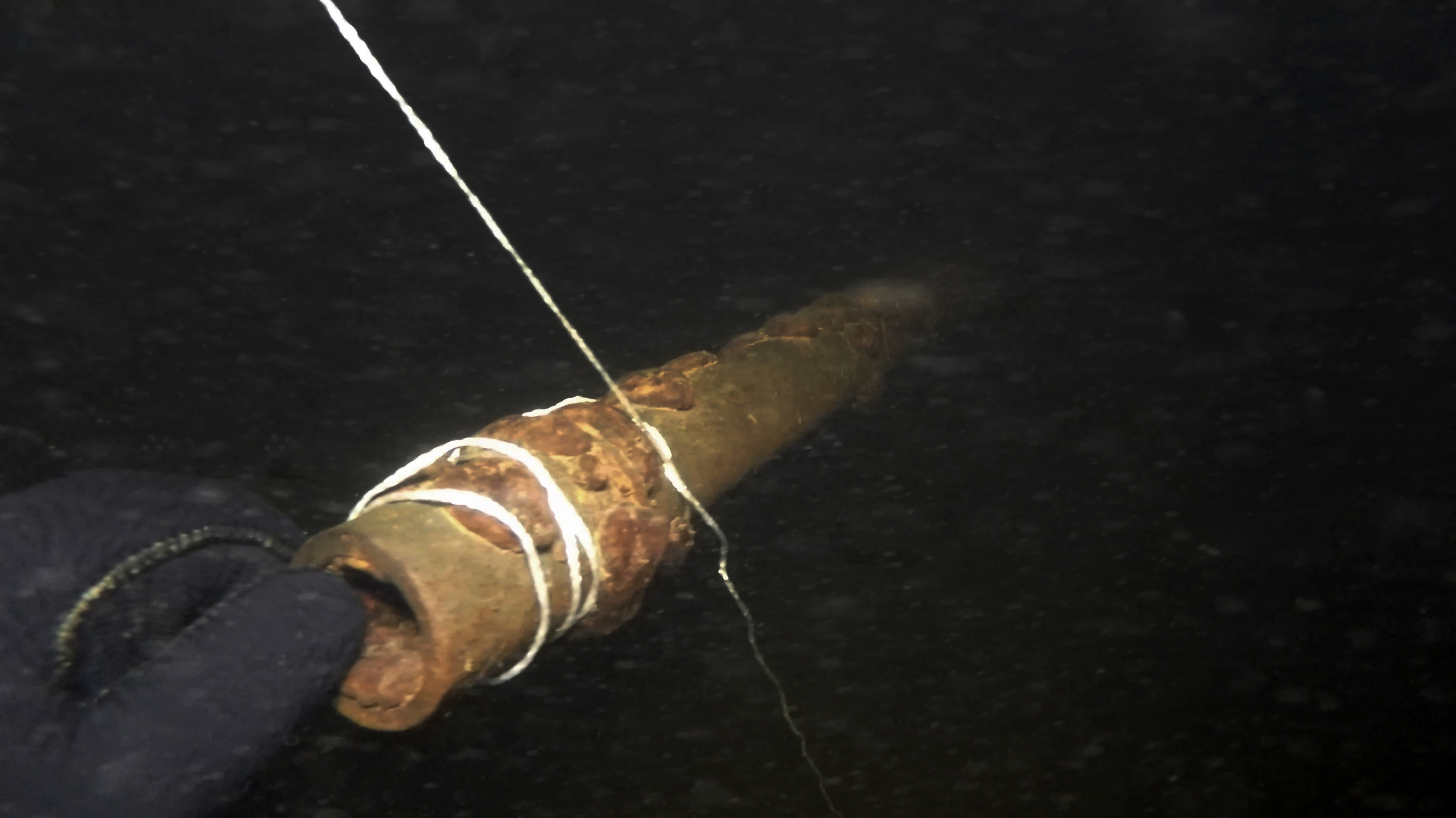
On these islands during the war (1941–1944), an advance party of the Ladoga Finnish military flotilla was based. Puffing on his pipe, slowly, with a delay, savouring every word, Captain Chupin said: “There were six torpedo boats that Mussolini had sent. They did not participate in hostilities, but they took part in the famous landing on Sukho Island. The Finns provided the base, and the Germans brought in Siebel-class landing barges. From here, they left 10, and from Otsanlahti, nowadays Vladimirskaya Bay, there were eight.
“The first were to capture the island of Sukho, and the second were to land at Kobona and, thus, block the Road of Life, leaving besieged Leningrad to die. This was the most successful counter-control of our Ladoga military flotilla.
“The Nazis managed to land on Sukho. There were 300 of them against 50 of our guys. But the island was not given away! Our aviation sank their gunboats, and the Nazis retreated. Of the 18 fascist “Siebel,” 12 were sunk. It’s great to remember. We have much to be proud of!”
And here is another story that the captain remembered on these islands. In 1946, a captured German destroyer was brought here. Experiments were carried out on it to protect forces against radioactivity, and a so-called “dirty bomb” was blown up inside the destroyer. “In cabins of varying degrees of security, we watched how experimental animals and rabbits reacted to radiation. When [Lavrentiy] Beria was shot, the experiments were stopped, the destroyer was abandoned. That was a real crime. The Germans loved to fight in comfort, so the destroyer had plush mahogany furniture. The local population of the nearest territories, for example from Priozersk, did not believe in radioactivity, so they took this furniture home. Many people died...”
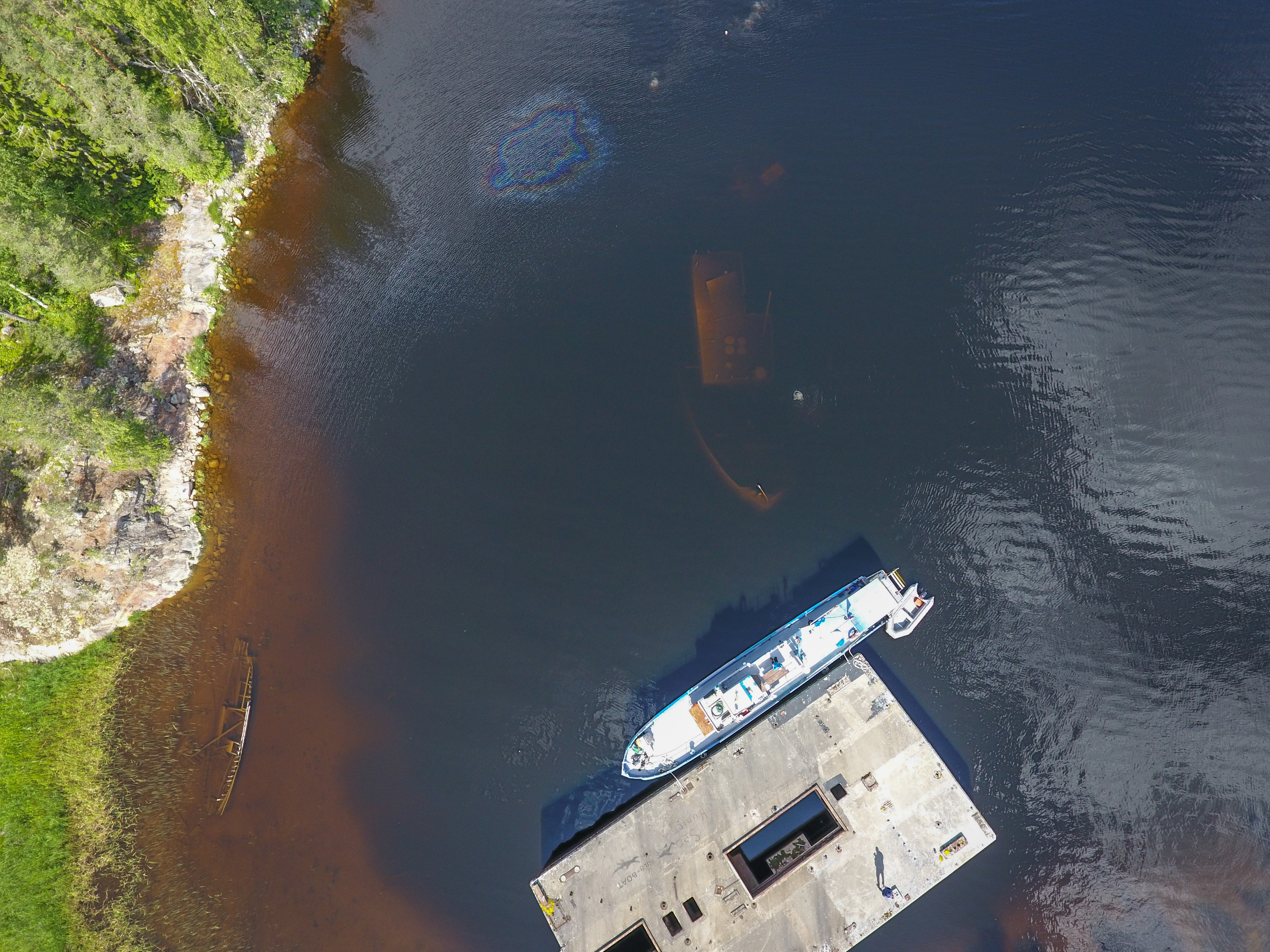
PS-1 Sevastopol
One of the interesting sunken objects visited by Oryol divers was the experimental ship PS-1 Sevastopol, which sank off a skerry near the village of Lakhdenpokhya. The ship rests almost on its keel. The depth at the bottom is eight meters and the deck is near the surface. Despite many attempts by researchers to learn more about the wreck, the history of this ship remains a mystery. It is known, however, that the ship undertook studies of new samples of underwater marine weapons.
On the deck of the wreck, one can see an aircraft engine with a propeller made of narrow blades, measuring two meters across, which was used to pump air inside the ship. One can also see electric winches, a diesel engine, and details of the vessel's superstructure. Special training is required for those wishing to go inside the ship, so trying to penentrate the wreck without special training is not advised.

Afterthoughts
Nature is smarter than us. She heals herself. The main thing is not to interfere with it and not to bring it to the point of no return. The members of the expedition and tourists from the Odyssey-2 ship believed the captain, went to the islands and picked mushrooms. It must be said that the mushrooms were delicious there, mostly ceps. In the galley, the cook fried them with potatoes. Home-cooked meals are always tastier.
The stormy waves of Lake Ladoga, which looks like the sea in windy weather, has incredible sunsets and sunrises, sheer cliffs on the skerries and sand dunes on the eastern beaches. All this will forever remain in the hearts of everyone who has seen these magnificent landscapes at least once in his or her life. It is worth coming here, because the harsh Ladoga is not only living history, but also one of the most beautiful places in Russia. ■
The wreck expedition team leader was Sergey Kulikov, who is head of the Oryol diving club “Divo” in Russia. Email: ssm.72@mail.ru or go to: dive-orel.ru



